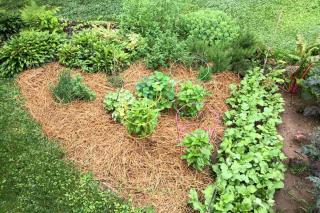

Lawn trimmings are definitely among the most common types of garden waste. Use grass clippings to mulch flower and vegetable beds! Just don’t layer it too thick…
→ Read also:

On top of this, lawn grass has a few other benefits over other organic mulch materials! Indeed, it’s the ultimate local resource, so no energy to expend transporting it. It only costs a little effort to collect (meaning you still have to mow the lawn) and it’s already cut to size by the mower, so no need for shredding or chipping machines.
Mulch is one of the best ways to maximize all the great organic matter that cut lawn grass represents.
First of all, always try to add the first few load or two of the mower to your composter. The extra “brown matter” grass clippings represent will help the compost digest kitchen scraps and the like faster.
After that, spread it atop the soil in your flower and shrub beds, and, of course, in the vegetable patch.
Mulching is indeed nature’s own way of transforming garden waste into healthy organic nutrients, and this works for the lawn itself, too. A thin layer of chopped up lawn grass will quickly break down and, in doing so, converts decaying matter into nutritious elements lawn grass needs to grow lush and dense.
Watch out, though: if you plan on exclusively using the “mulch” position of your lawn mower to deal with lawn trimmings, you’ll have to mow the lawn at least twice a week. Mowing more than a half-inch of grass at a time is going to smother the grass growing beneath.
In the end, variety is the way to go: apply each of these methods in turn. From time to time, use the hamper to lug grass clippings to the compost, and then the next mowing session, mulch to leave shredded clippings on the lawn itself.